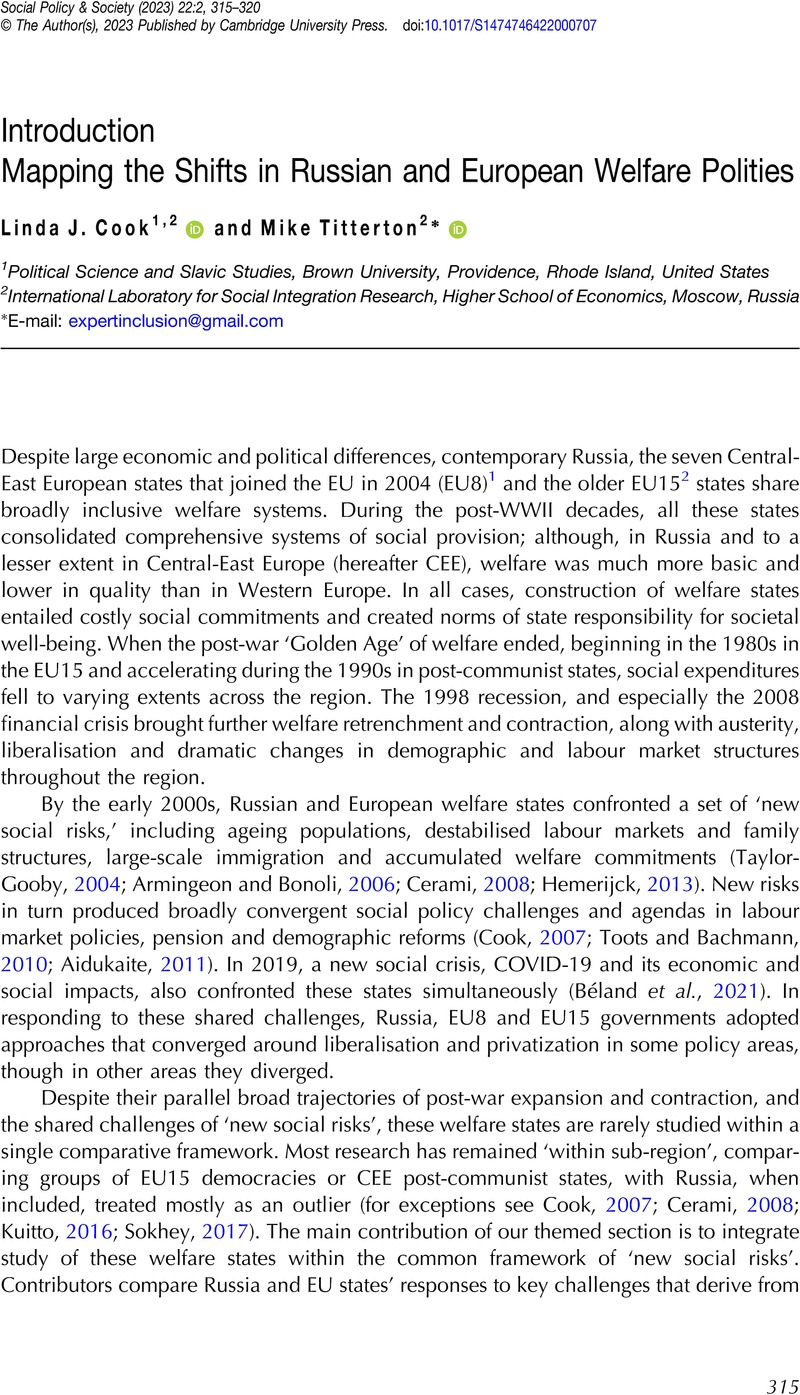Crossref Citations
This article has been cited by the following publications. This list is generated based on data provided by Crossref.
Titterton, Mike
and
Iarskaia-Smirnova, Elena
2024.
Comparative Studies of Russian and European Welfare Polities.
Social Policy and Society,
Vol. 23,
Issue. 3,
p.
784.


